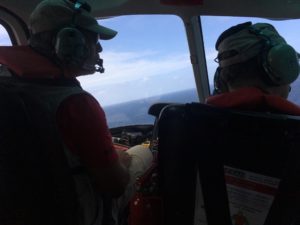 Earlier this year Navigatus ran a survey of the aviation community to find New Zealand’s most challenging aerodrome. In an optional question, survey participants were asked if they had ever used a transmitting portable electronic device (T-PED) to receive and use information while in flight.
Earlier this year Navigatus ran a survey of the aviation community to find New Zealand’s most challenging aerodrome. In an optional question, survey participants were asked if they had ever used a transmitting portable electronic device (T-PED) to receive and use information while in flight.
The results were interesting.
Under CAR Part 91.7, use of a portable electronic device with transmitting capability (T-PED) is not permitted at any time while operating under IFR, but is permitted under VFR. This means that pilots flying under VFR are currently allowed to use their cellular device to retrieve and display real time data – such as weather radar or airspace boundaries.
121 respondents (29.1%) admitted to using a mobile device for in-flight data retrieval “on a regular basis”, while 117 (28.1%) declared that they had done so “a few times”. A further 154 respondents (37.0%) had “never done so, but would consider it”. While, just 24 (5.8%) declared that they “had never and would never do so”.
The most common information received via T-PED while in-flight was en route and destination weather. Navigation, moving map, GPS and airspace information were also in high demand, along with NOTAMS.
There is clearly a significant safety risk in pilots using mobile devices for navigation related purposes while in-flight. While interference with aircraft systems is a possibility, the question of data integrity is perhaps an even bigger issue.
Through correspondence with the CAA, it became clear that the main concern was not just about the aircraft in question, but how that aircraft interacts and operates within the aviation system; a system which now is far more interconnected than ever in the past. Any pilot relying on questionable data is not only putting themselves at risk, but also others who occupy the same airspace. With the ever growing capability and use of electronic devices, this is an evolving area of concern that deserves ongoing further discussion.
We understand that the CAA is currently revising AC91-20 (Guidelines for the Approval and Use of Electronic Flight Bag Devices) to include further guidelines on VFR T-PED use.
Survey prize winner
The winner of the $250 Pilot Shop voucher was Trevor Parker (PPL-A).
Trevor passed his PPL in September 1984 and has since logged around 2400 hours flight time. Over 2000 hours of this was accumulated in an award winning, home built Pazmany PL2 (ZK-TLP). Trevor says: “Due to the thirty six years that I have enjoyed my involvement in aviation I feel it would be appropriate for me to give a little back. I would like to pass on the $250 voucher to the CFI of Tauranga Aero Club, James Churchward, to be presented to the most promising or deserving student pilot.” – a great idea Trevor, and very generous!
____________________________________________
Navigatus would like to thank all pilots who shared their knowledge through participation in the 2016 New Zealand Pilot Survey.
Full results for the survey are available online at www.navigatusconsulting.com

Comments
No comments yet.